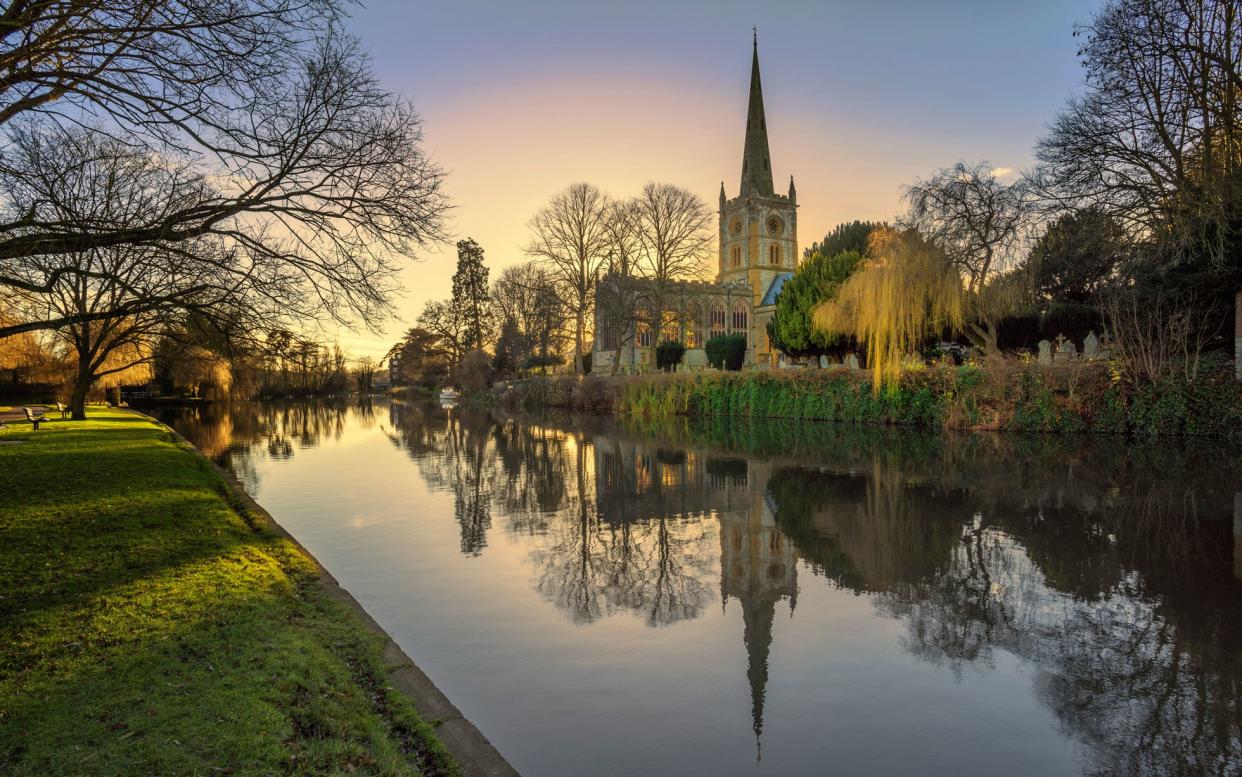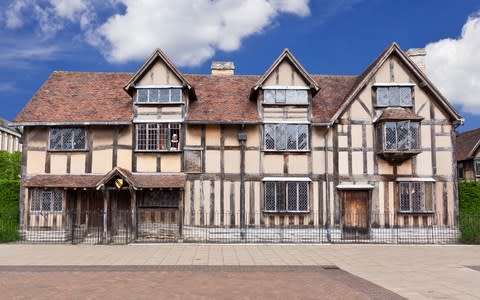Much ado about Stratford-upon-Avon: Why now is the perfect time to visit Shakespeare's hometown

Isn’t Stratford a bit of a theme park?
This antique town of fabulous timber-frame inns and houses celebrates Shakespeare big time. Of course it does. The world’s most acclaimed writer was born here in 1564 (probably on April 23) and died here in 1616 (probably on April 23). Yet Stratford is not all homage to history; there’s a contemporary heartbeat, too.
This month sees the Royal Shakespeare Company (rsc.org.uk) staging a new version of Maydays, David Edgar’s 1983 hit drama about revolutionary politics. The RSC is launching new audition tours (adults £9, children £5), on which you go backstage, try on costumes and then tread the boards reciting Shakespearean lines in a mock audition.
The Stratford Literary Festival also runs winter events, such as talks by Jodi Picoult and Channel 4 news presenter Cathy Newman (Oct 28 – Nov 17; stratfordliteraryfestival.co.uk). Or head eight miles west for a foodie fix at Alcester Food Festival (Oct 20; alcesterfoodfestival.org.uk).
Take me around the town first
For a wonderfully informative overview of Stratford – Shakespeare and all – join a Stratford Town Walk (stratfordtownwalk.co.uk; adults £6, children £3). Two-hour ambles leave from outside the RSC main theatre at 11am daily; among many other places, you’ll pause outside the wattle and daub house where Shakespeare was born, the church where he is buried and the house where his daughter and her frankly crackpot-sounding, physician husband lived.
Along the way you’ll be treated to terrifically diverse stories, learning that it was the actor David Garrick who kick-started tourism to Stratford by organising the first Shakespeare jubilee here in 1769, and that in the Nineties The Teletubbies (another great Stratford export) was devised from a studio on Chapel Street, now an optician’s practice.

Teletubbies? No thanks. Show me some Shakespeare
There’s a host of Shakespeare-related sites to visit (shakespeare.org.uk), some more tenuously connected to the Bard than others. Shakespeare’s Birthplace, complete with actors in period dress (adults £15.75, children £10.35), is inevitably crowded – and gives absorbing insight into glove making, one of the occupations of Shakespeare’s father.
Just outside town are Anne Hathaway’s Cottage (adults £11.25, children £7.20), a charming little house where, purportedly, the playwright’s wife grew up, and Mary Arden’s Farm (adults £13.50, children £9), a bucolic working Tudor farm – although Shakespeare’s mother, said Mary Arden, actually lived next door.

On Chapel Street, New Place (adults £11.24, children £7.20), the large house Shakespeare bought for his retirement, no longer exists, but you can explore the recently restored gardens.
Best of all is the nearby Guildhall complex. It’s billed as Shakespeare’s Schoolroom to maximise its appeal, and indeed you are shown the timber-frame room where the playwright would have been taught (in Latin) – and you learn about education in the 16th century. Yet there’s much more to this glorious building, which dates back to the 1400s. Not least is a former chapel where conservation work has uncovered an ancient mural (shakespearesschoolroom.org; adults £8, children £5).
Miss, I’m too old to learn. Where do I have fun?
Take your pick of engaging venues, suitable for all ages and offering an inspired antidote to Shakespeare. The brilliantly quirky MAD Museum is filled with pieces of kinetic art – MAD stands for “mechanical art and design”. You push buttons to get the displays moving (mermaid, dinosaur, a wall of marbles) and then marvel at the ingenuity (themadmuseum.co.uk; adults £7.80, children £5.20).
At The Old Slaughterhouse, tap into lively community spirit. This inventive gallery and workshop offers permanent displays about Stratford’s social history (pick up a Bakelite phone receiver, for example, and you’ll hear the local butcher’s story) as well as changing exhibitions; the current display is on local “land girls” of the two world wars (escapearts.org.uk; free).
For those who prefer things decidedly more alive, at the Stratford Butterfly Farm you can walk into an enchanting rainforest housed in a substantial greenhouse. It’s filled with thousands of butterflies – as well as moths, a parrot and a couple of iguanas – while in a room alongside is a large and diligent colony of leafcutter ants (butterflyfarm.co.uk; adults £7.25, children £6.25).
I would give all my fame for a pot of ale
For a fine choice of tea shops, head to Sheep Street. Here, the Fourteas is a Forties-themed café, with homemade cakes, Glenn Miller songs playing – and no rationing (thefourteas.co.uk). If you’re in need of stronger refreshment, make tracks to The Garrick Inn, which dates from the early 1400s and claims to be the oldest pub in Stratford (there are several other contenders).
Try a half of Shakesbeer (yes, really – a mellow craft ale made exclusively for the inn) to drink alongside good pub grub such as grilled salmon (greeneking-pubs.co.uk). For a break from Stratford’s quintessential Englishness, enjoy a Greek meze at El Greco (el-greco.co.uk).
Now to sleep, perchance to dream
Stratford’s luxury hotel offering was given a boost earlier this year with the opening of a new Hotel du Vin (telegraph.co.uk/tt-hotel-du-vin-stratford-upon-avon). It’s a smart-casual place with good bistro fare and very comfortable bedrooms. A little more central, yet a little less costly, is The White Swan (telegraph.co.uk/tt-the-white-swan-hotel), set in a gorgeously creaky Tudor building.

